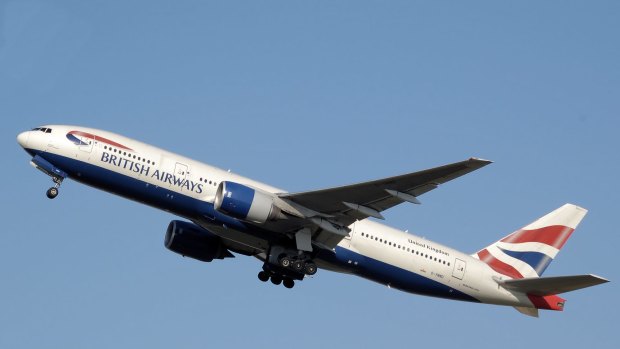
A British Airways Boeing 777-200 rode winds of 320km/h across the Atlantic.
Concorde may have been retired but a British Airways passenger jet approached supersonic speed this week as it rode a surging jet stream from New York to London.
The Boeing 777-200 jet reached a ground speed of 1200km/h as it rode winds of more than 320km/h across the Atlantic. At ground level, the speed of sound is 1225km/h.
The happy result was a flight time of just five hours and 16 minutes for BA114, which arrived an hour and half before schedule, according to the tracking website, FlightAware.
Dozens of other flights also benefited from the jet stream's winter surge.
Pilots have long used jet streams - which flow across the globe from west to east - to cut journey times and save fuel.
Although airlines advertise the route at seven hours, it is not uncommon for flights to save an hour in the air, said Alastair Rosenschein, a former British Airways pilot who flew 747s between London and New York.
"It's just like surfing. It's extraordinary how fast you can go," he said.
But at only 10 miles [16 kilometres] across and about 2000 feet [610 metres] deep it takes skill, planning and a bit of luck to ride one for an entire route.
"You try to sit in the core of the jet where it's not too turbulent and where you can pick up some free mileage. It's not unusual to get 100mph [160km/h] tailwinds but they have got more than that," he said. "This must be a record."
Wednesday's weather charts show the jet stream was running at 220 knots (410km/h) and was unusually wide, he added, making it easier for pilots and their passengers to benefit.
They are generally found between 7000 and 12,000 meters - perfect altitudes for cruising airliners - and are caused by a combination of the earth's rotation and heat from the sun.
This week's extreme effects are thought to be the result of plunging temperatures in the United States hitting warmer air from the south.
Whatever the cause, it has proved a boon to travellers. Online flying forums were abuzz with passengers describing their own experiences of flights that had taken less than five and a half hours to cross the Atlantic, along with reassuring messages from pilots that the speeds were well within the tolerances of modern planes.
But while it may help trans-Atlantic passengers arriving from New York, pilots have to plot routes that avoid the high winds when they fly west.
And they can be responsible for what is known as "clear air turbulence", forcing pilots to switch on the fasten seatbelts sign when planes are buffeted by disturbed air surrounding the smooth core. Man-made climate change is blamed for making the problem worse.
Telegraph, London
Sign up for the Traveller Deals newsletter
Get exclusive travel deals delivered straight to your inbox. Sign up now.